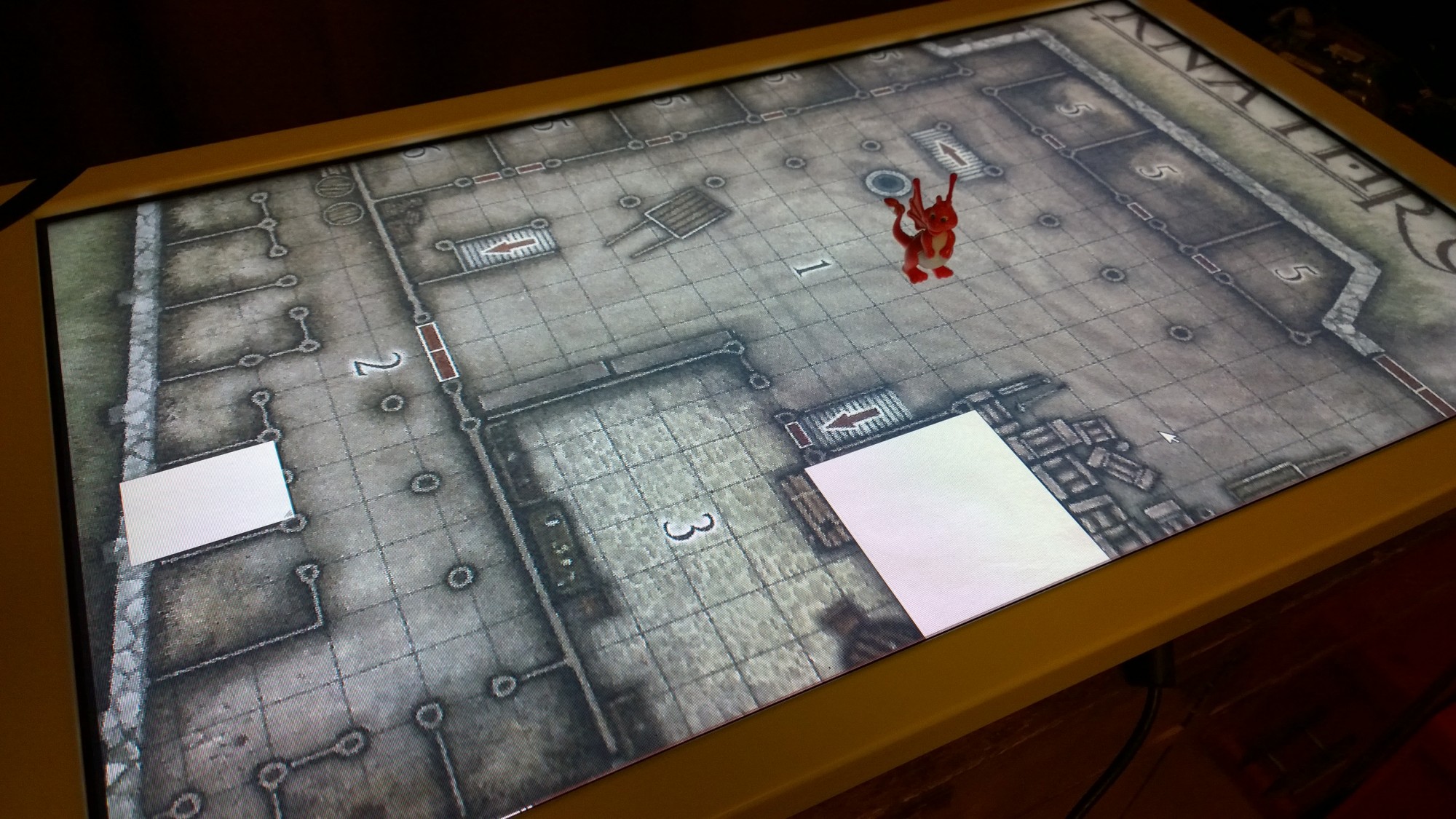As a tabletop miniature game, Dungeons & Dragons relies on a grid map that determines the positions of the players and foes. There are various ways to keep track of the situations in game.
- First and most fundamental is mental mapping, which is done in the imagination of all players and the game master. Negotiation and communication is the key in this and it is roleplaying in its purest form.
- Second method is to use pen and paper to draw the map of a certain area as it is described. This does not involve miniatures yet.
- Third is to use tile sets, that consist of printed cardboard grid tiles that are used to compile the map. With this method miniatures are used.
- Fourth is to use grid mat has printed grid and the mapping is done with water soluble markers
- Our AREENA I is based on this, but is a glass grid with backlight.
- Fifth method is to use printed paper maps. In 1:1 size the maps could be several square meters in size.
- Sixth method is to show the map on a flat screen on its back
- Our AREENA II is based on this method.
The idea is very simple. To tip a flat screen TV on its back and plug it on a computer to show the map in right scale. This project was great excuse to aquire a new TV and use the old one for my hobby. Old Viewsonic 32″ television from year 2006 was stripped so that it could be modified for use on a table.

To handle the map I compiled a browser driven software called ”dndtable”.
Available at GitHub https://github.com/tuomasparviainencom/dndtable
The software has following properties
- 20 covers for revealing the map when needed
- in context submenu on mouse right click
- Jquery dragging and resizing of the covers
- Cover shapes of rectangles, circles and ovals
- Cover rotation
- Few colors to change the covers to
- opacity selection of the covers
- locking and freeing the draggability of the map and individual covers
- Hiding covers individually, showing hidden and hide all.
- Covers and map locations and styles are saved in browser local storage feature.


Vastaa